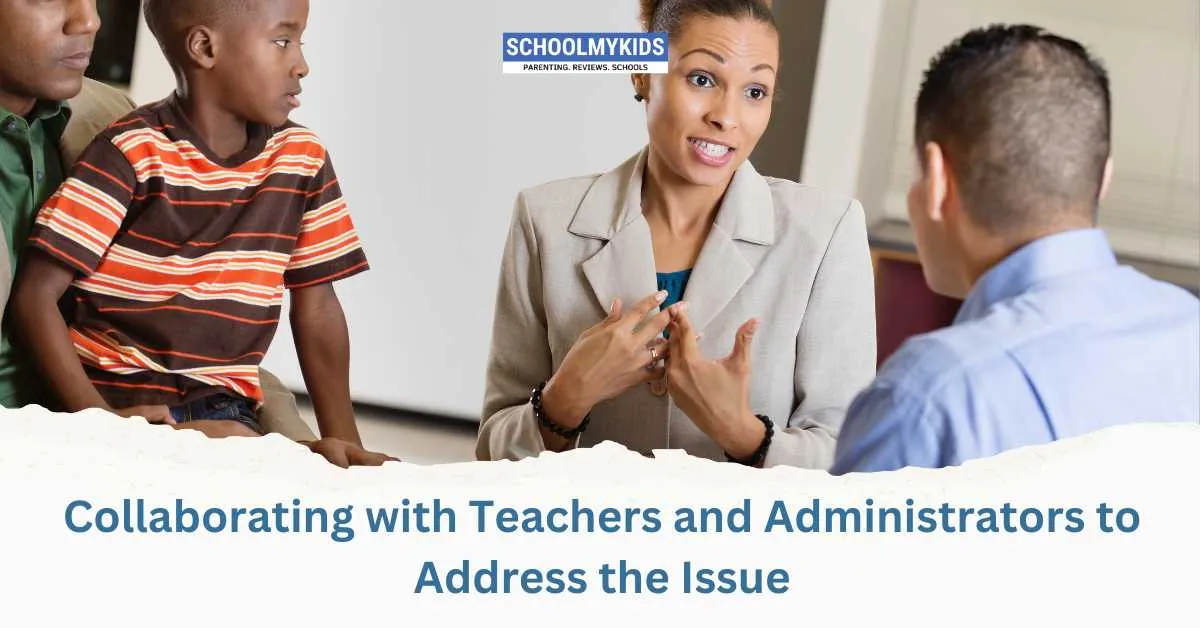Effective collaboration between parents, teachers, and school administrators is crucial when addressing bullying or any issues affecting your child’s well-being. Working together as a team creates a supportive network that ensures quick intervention, ongoing monitoring, and a safe learning environment for your child. In this article, we will explore strategies and best practices for fostering collaboration and building a strong partnership with school staff.
The Importance of Collaboration
Collaborating with educators and administrators benefits your child in several key ways:
- Early Intervention: When school staff are aware of potential issues, they can act swiftly to prevent bullying from escalating.
- Comprehensive Support: Teachers and administrators can provide additional insights into your child’s behavior at school, enabling a coordinated approach to support both academic and social-emotional needs.
- Accountability: Working together helps ensure that the school’s anti-bullying policies are enforced consistently, protecting your child and creating a safer environment.
- Empowerment: Open communication gives parents the opportunity to advocate for their child’s needs and contribute ideas for positive change.
Building the Partnership
1. Establish Open Communication Channels
- Initial Meeting: Start by scheduling a meeting with your child’s teacher and, if necessary, the school counselor or principal. Explain your concerns calmly and provide any evidence or examples that illustrate your child’s struggles.
- Regular Check-Ins: Agree on a schedule for follow-up meetings or updates. Regular communication helps monitor progress and adjust strategies as needed.
- Digital Communication: Utilize email or school portals to share updates and ask questions. This ensures that everyone is informed about any changes in your child’s behavior or academic performance.
2. Share Your Observations
- Document Incidents: Keep a detailed log of any incidents of bullying or behavioral changes. This documentation is invaluable when discussing concerns with school staff.
- Describe Behavioral Shifts: Clearly explain what you’ve observed at home, such as changes in mood, reluctance to attend school, or academic decline. Providing specific examples helps educators understand the context.
- Express Your Concerns: Use “I” statements to express your feelings without placing blame. For example, “I’ve noticed that my child seems more withdrawn lately, and I’m concerned about how that might be affecting their school experience.”
3. Develop a Collaborative Action Plan
- Set Clear Goals: Work together to outline clear objectives, such as reducing bullying incidents, improving your child’s academic performance, or enhancing social interactions.
- Identify Strategies: Discuss practical solutions such as adjusting seating arrangements, implementing peer mentoring, or providing additional counseling services.
- Define Roles: Clarify each party’s responsibilities. For example, teachers might monitor classroom behavior, while administrators ensure that anti-bullying policies are enforced. Parents can support their child at home by reinforcing strategies discussed during meetings.
- Establish Timelines: Create a timeline for implementing strategies and set dates for follow-up meetings. This structure ensures that progress is tracked, and adjustments are made if necessary.
4. Foster Mutual Respect and Trust
- Acknowledge Challenges: Recognize that educators face many challenges in managing diverse classrooms. Express appreciation for their efforts, which helps build mutual respect.
- Stay Positive: Focus on solutions rather than dwelling on problems. A positive approach encourages collaboration and makes it easier to brainstorm creative strategies.
- Be Patient: Change takes time. Understand that improvements may be gradual and that consistent, long-term collaboration is key to success.
Overcoming Potential Obstacles
Even with the best intentions, challenges may arise in maintaining effective collaboration. Here are some common obstacles and suggestions for overcoming them:
- Communication Gaps: If you feel that updates from the school are infrequent, politely request more regular feedback or suggest a scheduled weekly or biweekly check-in.
- Differing Perspectives: Teachers and parents may have different views on what is best for the child. Listen actively to the school’s perspective, share your insights, and seek a compromise that addresses your child’s needs.
- Resource Limitations: Schools might be constrained by limited resources. In these cases, ask about community programs or external support services that could supplement the school’s efforts.
- Escalation of Issues: If bullying persists despite initial interventions, consider requesting a meeting with higher-level administrators or the school board to review policies and enforcement practices.
Benefits of Successful Collaboration
When parents, teachers, and administrators work together effectively, the benefits extend far beyond the immediate resolution of bullying incidents. A collaborative approach can:
- Enhance the Overall School Climate: A strong partnership can foster a culture of respect and inclusion, reducing bullying and creating a supportive learning environment for all students.
- Improve Academic and Social Outcomes: With effective intervention, children often show improvements in both academic performance and social interactions, leading to increased self-esteem and confidence.
- Empower Parents and Educators: A united front creates a sense of empowerment among all parties, reinforcing the message that everyone has a role in creating a safe and nurturing school environment.
- Promote Continuous Improvement: Regular communication and feedback allow schools to refine policies and practices, ensuring that interventions remain effective and responsive to changing needs.
Conclusion
Collaborating with teachers and administrators is a critical strategy in addressing bullying and supporting your child’s well-being. By establishing open communication channels, sharing detailed observations, developing a comprehensive action plan, and fostering mutual respect, you can help create a safer and more positive school environment. Remember that successful collaboration is an ongoing process that requires commitment and patience from all involved. With a united approach, you can help ensure that your child not only overcomes current challenges but also develops the resilience and confidence needed to thrive in the future.









Be the first one to comment on this story.